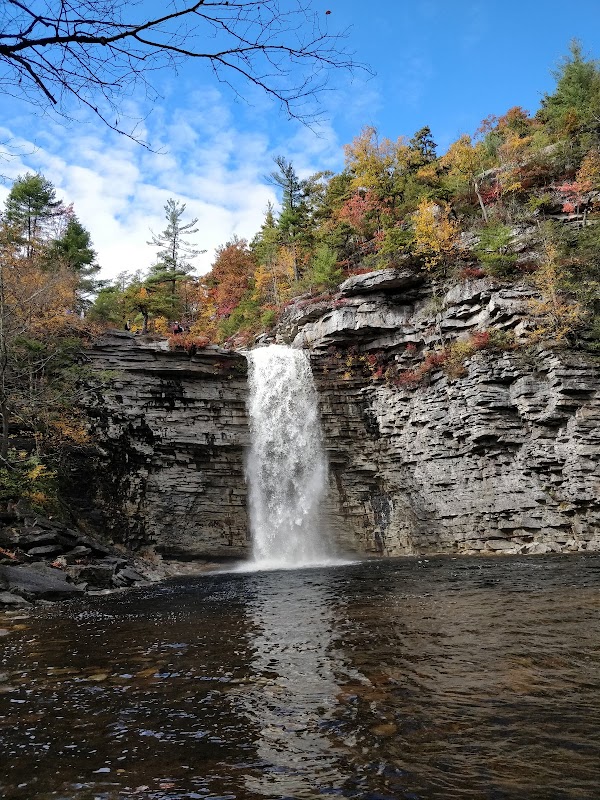
Discovering Creativity at the Staten Island Arts Festival
Experience the vibrant blend of art and community at the Staten Island Arts Festival, where urban spaces pulse with creativity. Explore installations, performances, and local culture that transform Staten Island into an open-air gallery worth planning your visit around.
Wear Comfortable Walking Shoes
The festival spans multiple venues with mixed terrain including sidewalks, parks, and paved paths. Opt for sturdy footwear to comfortably cover several miles without fatigue.
Stay Hydrated Throughout the Day
Bring a refillable water bottle. While vendors are on site, hydration helps maintain energy during extensive walking and outdoor performances, especially in warmer months.
Plan Your Route in Advance
Check the festival map and timing to prioritize key installations and performances spread across venues. This avoids backtracking and helps maximize your experience.
Visit During Off-Peak Hours
Arriving early on weekdays or just before sunset reduces crowd density and allows more intimate interactions with the art and environment.
Discovering Creativity at the Staten Island Arts Festival
The Staten Island Arts Festival commands attention with an energetic pulse that extends beyond traditional gallery walls. Held annually in New York’s often-overlooked borough of Staten Island, this event turns public spaces into canvases and stages, inviting visitors to engage with art as a living, breathing force in the community. As you explore the festival, each installation and performance challenges you to connect with the place’s unique character—where urban grit meets natural calm.
Spanning venues across the waterfront and inland parks, the festival features everything from bold street murals and thought-provoking sculptures to live music and interactive theater. The setting encourages movement: whether weaving through forested paths at Clove Lakes Park or tracing the shoreline at Staten Island’s waterfront, the environment interacts with the art, shifting its energy and color in the daylight and breeze.
Planning your visit means thinking beyond the exhibits. Early spring and fall offer crisp, comfortable weather, perfect for strolling neighborhoods like St. George and the Arts District without the crowd rush. Comfortable walking shoes are a must—the festival’s layout invites exploration on foot over several miles, through historic streets and green spaces where local wildlife may quietly observe the human spectacle.
Hydration and timing come into play, especially during peak weekend hours when popular installations draw crowds. The festival runs several days, so pacing yourself can enhance your experience, letting you absorb the details instead of skimming surfaces. Vendors offer local food and beverages, grounding the artistic experience in practical refreshment.
Each year, the festival highlights emerging and established artists, creating a layered dialogue between disciplines and generations. You’ll find chance encounters between sculpture and nature, between music that rides the winds and dance that responds to the underfoot earth. Here, art insists you participate actively: not as a distant observer but as a collaborator in its force.
Whether you’re a casual visitor or an art devotee, the Staten Island Arts Festival equips you with fresh perspectives and creative fuel. It’s an adventure in urban artistry, where every corner you turn reveals a new story by creators fiercely themselves—inviting you not just to watch, but to join the conversation.
Nearby Trips
All Adventures
Boat Charters
Water Activities
Adventures near Staten Island, New York
Discover the unique and memorable adventures that make Staten Island, New York special.
Frequently Asked Questions
Where are the main festival venues located?
Principal venues cluster in St. George near the Staten Island Ferry terminal, Clove Lakes Park, and along the North Shore waterfront. These areas provide a mix of indoor galleries and outdoor installation spaces.
Is the Staten Island Arts Festival family-friendly?
Yes, many events and installations are designed to engage audiences of all ages. Interactive exhibits and scheduled kids’ workshops make it welcoming for families.
Are pets allowed at the festival?
Service animals are permitted; however, leash laws and park regulations should be followed strictly for other pets, and some venues may restrict animal access.
What transportation options are available to get to the festival?
The Staten Island Ferry from Manhattan offers a scenic arrival. Local buses and limited parking are available. Biking routes are improving but check for bike racks at venues.
Are there food and drinks available on site?
Yes, local vendors provide food and refreshments, often highlighting Staten Island’s diverse culinary scene. Bringing snacks and water is still recommended for longer visits.
Can I purchase artwork at the festival?
Many artists present works for sale during the festival, offering opportunities to take home original creations or commissioned pieces.
Recommended Gear
Comfortable Walking Shoes
Supportive footwear ensures comfort through hours of walking on varied surfaces.
Refillable Water Bottle
Hydration helps maintain energy, especially during warmer or crowded festival days.
Light Layered Clothing
Layers respond to shifting temperatures and wind, especially by the waterfront.
Small Backpack or Tote Bag
Useful for carrying water, snacks, rain gear, and any festival information brochures or souvenirs.
Local Insights
Hidden Gems
- "The rooftop garden at the Staten Island Museum offers less-known views to the harbor and city skyline."
- "The Stapleton Waterfront hosts small but impactful pop-up installations not on main maps."
Wildlife
- "Watch for migrating birds along the waterfront, including herons and egrets that seem curious about festival visitors."
- "Eastern gray squirrels are common in park venues, darting along branches with unexpected agility."
History
"Staten Island's cultural depth includes historic ferry routes shaping trade and migration; the festival often weaves these stories into its narrative artworks."
